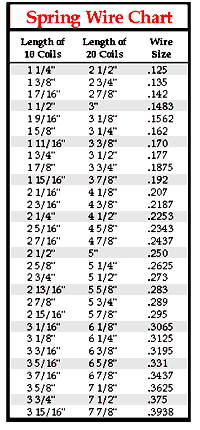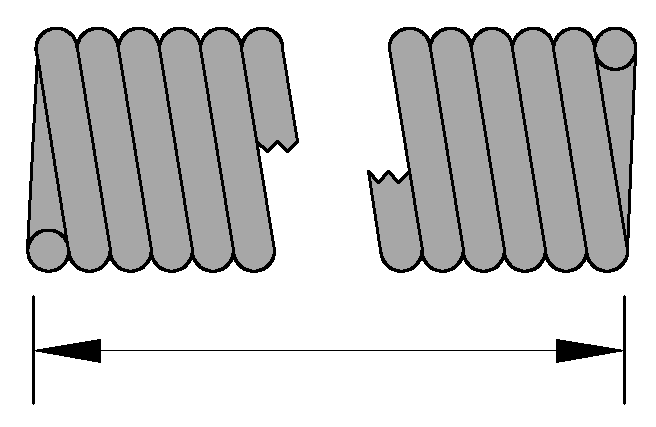How to Properly Measure a Garage Door Torsion Spring
Step 1:Determine Wind Direction
Look at the end of the spring to determine the wind direction. If the end of the spring points in the clockwise direction it is a left wound spring. If the end of the spring points in the counter-clockwise direction it is a right wound spring. Please remember the side of the door a
spring is located on does not indicate the wind of the spring. Most
winding cones are color coded for hand identification. Right hand wound
springs should have red winding cones. Left hand wound springs should
have black winding cones.

Left Wind Right Wind
Step 2: Measure Inside Diameter (ID)
Measure the inside diameter of your spring with a tape measure or caliper.Most common inside diameters are 1 3/4", 2”, 2 5/8” and 3 3/4". The chart below shows common
ID’s used by various manufacturers. If no manufacturers name is evident,
usually a part number on the cone will indicate the inside diameter:
134 or 175 = 1 3/4" ID
258 or 263 = 2 5/8" ID
375 or 334 = 3 3/4" ID

Step 3:Determine Wire Size
WIRE SIZE: A spring's wire size can be determined by several different tools or techniques. Use of a caliper, micrometer, or wire gauge are common ways to determine a spring's wire size. If none of these tools are available, you can easily measure how many coils are in 20 inches then divide the amount of coils into 20. (Example:20 ÷ 80 = .250) or simply measure ten coils of wire to the nearest 1/16th of an inch, and refer to the spring chart below.Important:the spring must be tightly compressed with no gaps with no tension. It's also a good idea to measure twenty coils as a double check.

Step 4: Measure Length of Spring
Using a tape measure, measure the spring in its unwound state to measure the length of the spring (to the nearest half of an inch). If the spring is broken or distorted, you can either measure both segments or simply count the total number of coils and multiply by the wire size (for example, 120 coils X .250 wire = 30" and 120 coils X .375 wire = 45"). Measure spring only - do notinclude length of winding and anchor cones.

Torsion Springs - Helpful Formulas and Rules
Number of coils x wire size = spring length
Example: 100 coils x .250 wire = 25"
Subtract the wire size twice from the OD of a spring to determine the ID
Example: 2-1/2" OD spring with .2350 wire, 2-1/12" - .250 - .250 = 2" ID
Number of turns x wire size = amount of spring growth
Example: 10 turns x .250 wire = 2-1/2" of spring growth
Inches divided by the number of coils = wire size
Example: 2-1/2" per 10 coils, 2-1/2" divided by 10 = .250 wire size
Total IPPT of a door's springs divided by the cable drum multipler = door weight
Example: 1PR .250 x 2 x 32" installed on a 7' door (the most common residential size) with a 15' radius, 400-8 drums. IPPT is 41.5 per spring, multiplier is .2886. Total IPPT of 83 divided by .2886 = 289 pounds of door weight.
Door Weight x Hi Moment Arm divided by Number of Turns = Required IPPT
IPPT x Number of Turns divided by Hi Moment Arm = Door Weight
High lift is the measured distance from the top of a closed door to the bottom of the horizontal track
When converting springs, always concert to a spring of equal or greater wire diameter.
|